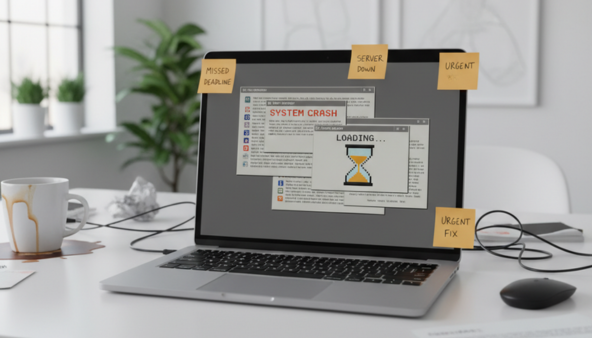The cost of stagnation is rising fast
For decades, legacy systems have quietly powered mission-critical operations. They hold decades of business logic, process knowledge, and customer insight, often irreplaceable. Yet they’re also burdened by outdated technology stacks incapable of leveraging AI, insufficient documentation, and reliance on dwindling pools of specialists.
Traditional modernisation approaches, lengthy rewrites or risky replacements, have often proven too expensive, too slow, and too disruptive to the business during the migration phase. Many organisations have simply chosen to “live with” their legacy platforms, keeping the lights on and layering new systems around them.
But that strategy is reaching its limits. In the AI age, the cost of neglecting to integrate AI agents and automation into core business processes isn’t just a missed opportunity – it’s a strategic disadvantage in an increasingly competitive market.
From code to knowledge
AI is transforming the economics of legacy modernisation. By combining intelligent automation with deep software engineering, enterprises can now deconstruct, understand, and rebuild legacy systems at unprecedented speed, depth and scale.
Modern AI accelerators can augment legacy processes end-to-end, making legacy modernisation projects more affordable, faster, and more secure. These accelerators can help to:
- Analyse code: Ingest and interpret millions of lines of legacy code, user interfaces, and data models.
- Understand and document: Convert complex systems into clear, human-readable documentation — revealing workflows, dependencies, and business logic.
- Review: Map existing functionality for review and update.
- Rebuild: Regenerate a large portion of the old system into a modern cloud architecture, massively speeding up the rebuild process.
The result? Legacy applications can be modernised up to 50% faster, at a fraction of the time, costs and risks of previous project estimates. AI is turning once-unviable projects into compelling business cases.
Rediscovering lost knowledge
Before any code is rewritten, AI delivers one of its most overlooked benefits: knowledge recovery.
When legacy systems are reverse-engineered into clear documentation, enterprises regain visibility into how their business truly operates. This rediscovered knowledge fuels more intelligent decision-making, better governance, and more effective process optimisation.
In this sense, AI modernisation isn’t merely a technical upgrade; it’s an act of organisational renewal. It turns opaque systems into transparent assets and enables leaders to align technology with strategy in new and dynamic ways.
From modernisation to reinvention
AI-powered legacy modernisation represents a decisive shift in enterprise transformation. It moves the conversation from “replacement” to reinvention—from cost containment to capability expansion.
For CIOs and IT leaders, the message is clear:
- Reclaim control over legacy assets.
- Accelerate transformation with intelligent automation.
- Lay the foundation for AI-driven agility and continuous innovation.
Legacy systems are an untapped reservoir of value. With the right approach, what once held you back can now propel you forward.

